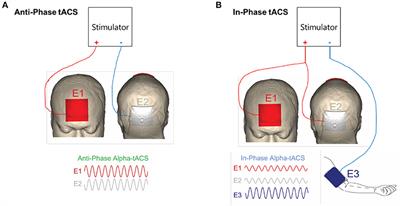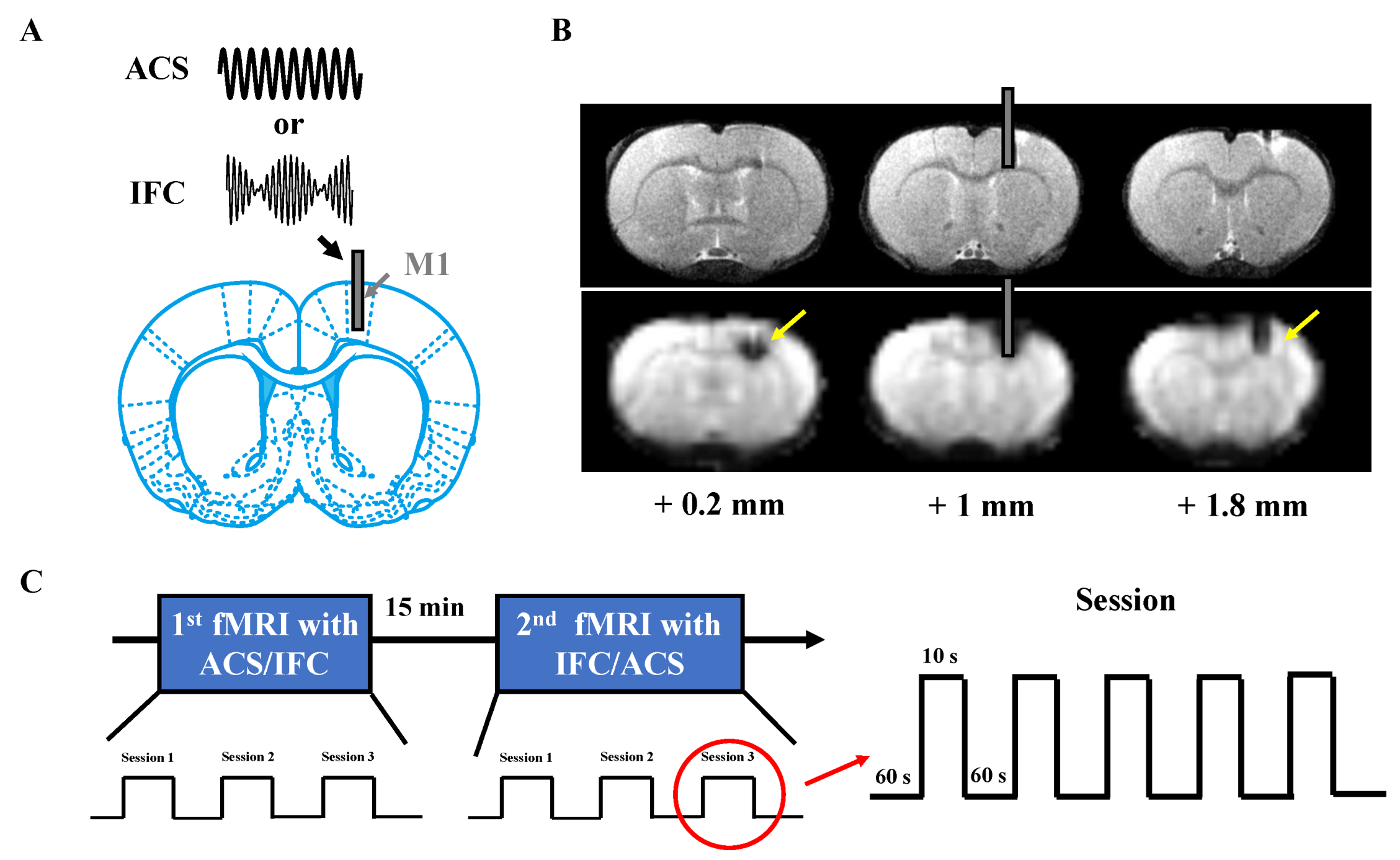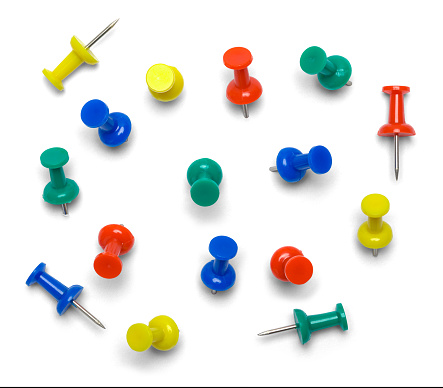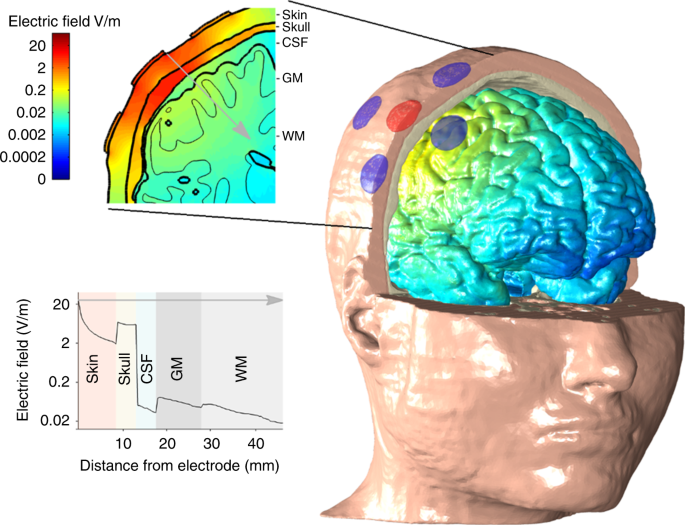
Multi-electrode and multi-source tACS for targeting ongoing phase
Download scientific diagram | Multi-electrode and multi-source tACS for targeting ongoing phase relationships. a A toy example of a three-electrode montage, with the phase relationship between the left and right parietal electrodes (red and blue) of interest to the researcher. b A classic tACS application where two electrodes oscillate in anti-phase (180°-lag). Here, the return (black electrode) remains inactive, since the red and blue electrodes mirror each other exactly. Delivering a single current source through two electrodes will always induce an anti-phase relationship (i.e., there is no need for the third electrode). The field spread was computed at the extremum of 2 mA peak-to-peak tACS (1 mA entry, red; 1 mA exit, blue). c Left, a simple example of splitting the current source between two electrodes (red and blue) so that they oscillate in-phase (0°-lag). Since the current is halved between them, they each have a maximum value of 0.5 mA, while the return (black) retains its maximum value of 1 mA. Right, the red and blue electrodes have separate current sources, and an offset of 90° has been chosen. At this instant in time (dashed line), this montage induces the same electric field in the brain as the in-phase montage. d Because the return (black) electrode must equal the sum of the red and blue electrodes (though with the opposite polarity) at each point in time, the field distribution changes dramatically across the tACS cycle. The 90°-lag between red and blue electrodes results in each equaling 0 mA exactly when the other reaches an extremum (~ 0.7 mA). For example, 45° forwards in time (indicated by dashed line), the left parietal electrode (red) becomes inactive. Another 90° forwards in time (135° total), the right parietal electrode (blue) becomes inactive. The ongoing 90°-lag between red and blue electrodes therefore creates a “travelling wave” throughout the brain. Indeed, any phase relationship other than 0° and 180° induces a non-static maximum absolute field across time. Field spread was computed for a composite scan (MNI 152) using Soterix Medical HD–Explore software. Note: For the in-phase and anti-phase montages, the point of absolute maximum field intensity remains constant across the tACS cycle (i.e., the value of the maximum electric field magnitude scales with the current intensity, but the position of this maximum remains static). For example, the red and blue electrodes in a always have equal but opposite values (180°-lag; i.e., current is always strongest under the two stimulating electrodes); similarly, the return (black) electrode in b is always twice the absolute value of the other electrodes (0°-lag; i.e., current is always strongest under the return electrode). At all other phase relationships, the electrode delivering the maximum absolute current changes over time. This phenomenon is described in Alekseichuk et al. (2019a) from publication: Current challenges: the ups and downs of tACS | The non-invasive delivery of electric currents through the scalp (transcranial electrical stimulation) is a popular tool for neuromodulation, mostly due to its highly adaptable nature (waveform, montage) and tolerability at low intensities (< 2 mA). Applied rhythmically, | Oscillation, Stimulation and Electrical Field | ResearchGate, the professional network for scientists.

Can transcranial electric stimulation with multiple electrodes reach deep targets? - ScienceDirect

Frontiers Remotely Monitored Home-Based Neuromodulation With Transcranial Alternating Current Stimulation (tACS) for Mal de Débarquement Syndrome

Experimental stimulation setups. (A) In-phase condition. Transcranial

Current challenges: the ups and downs of tACS

Probing the Link Between Perception and Oscillations: Lessons from Transcranial Alternating Current Stimulation - Yuranny Cabral-Calderin, Melanie Wilke, 2020

Interindividual variability of electric fields during transcranial temporal interference stimulation (tTIS)

Computational modeling of methodology and experimental design. A) The

Effects of tACS on Task-Related Responses (A) Grand mean ( 6 SEM)

Effects of online parietal transcranial electric stimulation on associative memory: a direct comparison between tDCS, theta tACS, and theta-oscillatory tDCS

Brain Sciences, Free Full-Text

Current challenges: the ups and downs of tACS









